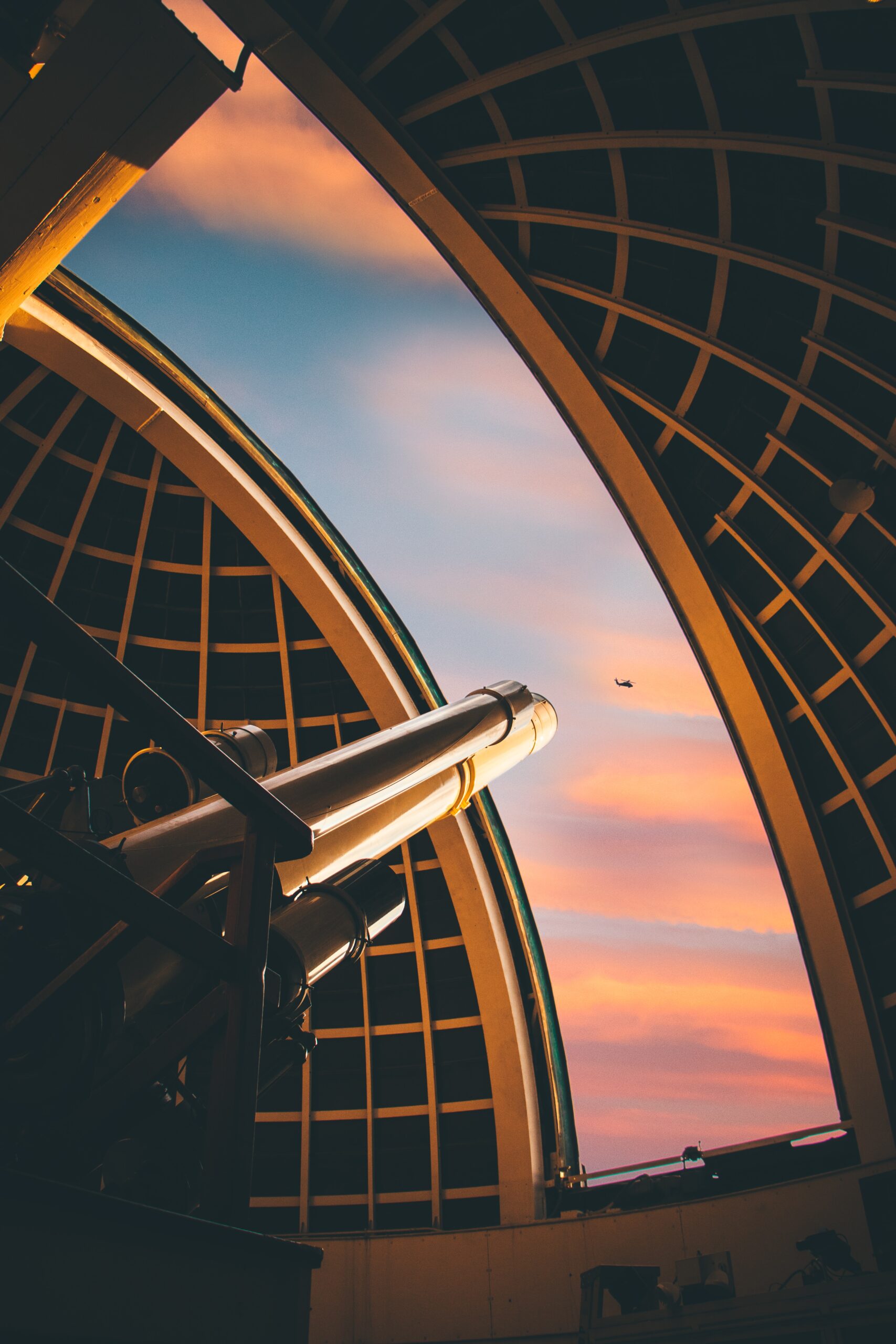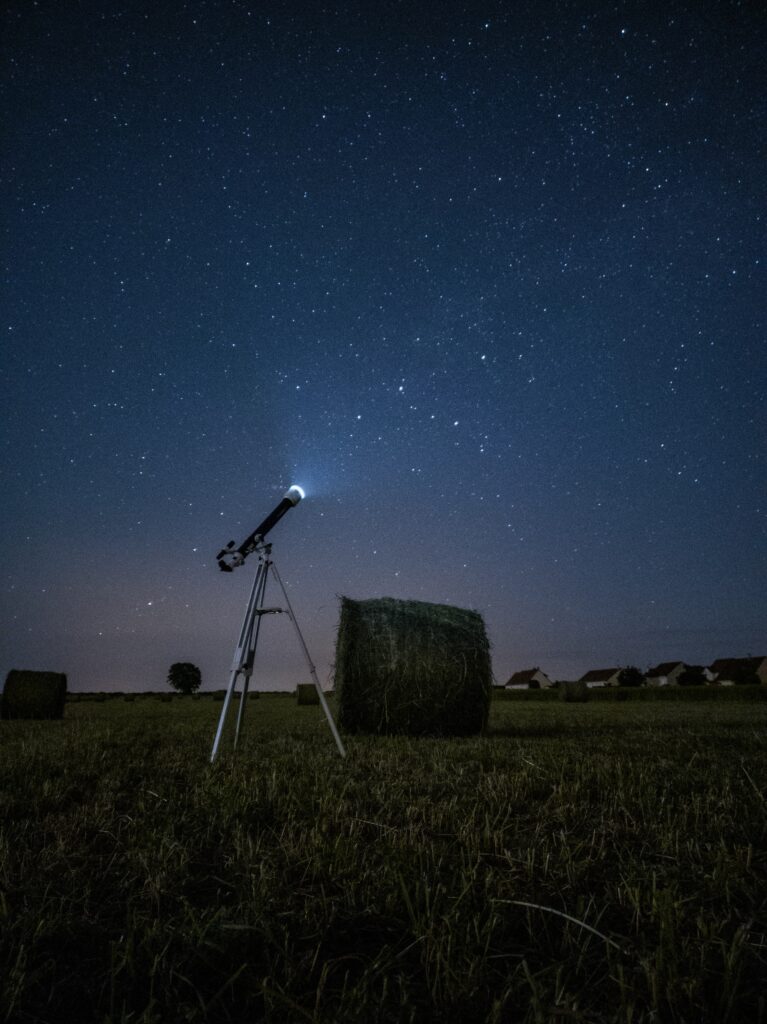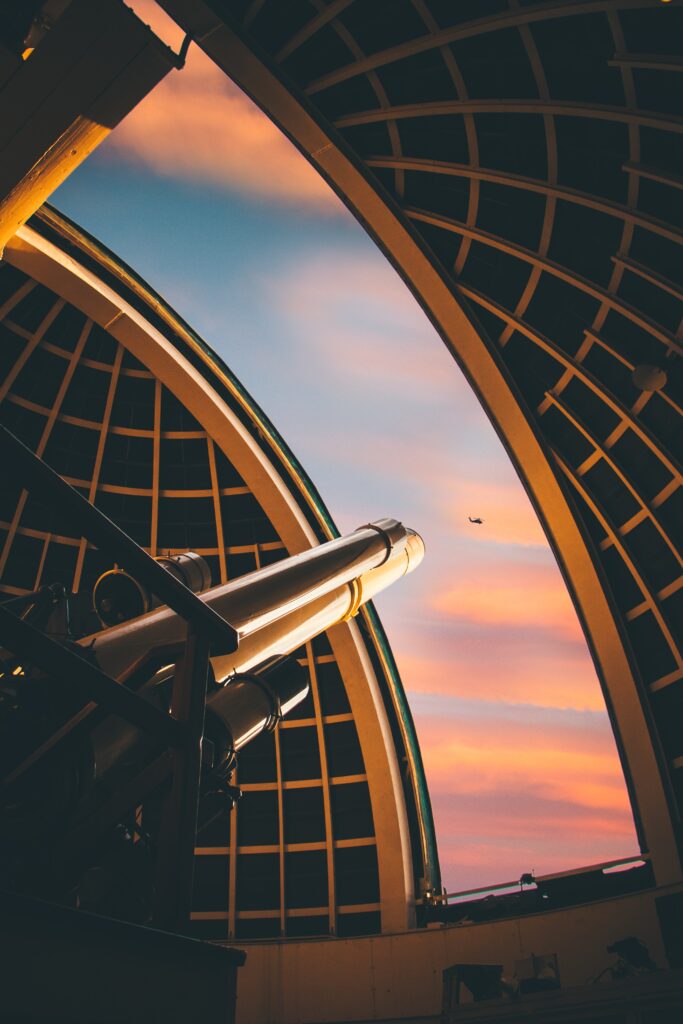
If you’ve ever looked up at the night sky and wondered about the mysteries of the universe, you’re not alone. Many people dream of being able to see planets clearly with a telescope, getting a glimpse into the vastness of space. But is it really possible? In this article, we will explore the capabilities of telescopes and answer the burning question on your mind: Can I see planets clearly with a telescope? Get ready to embark on a celestial journey that will leave you in awe of the wonders waiting to be discovered in the night sky.

How Telescopes Work
Telescopes are incredible instruments that allow us to observe and explore the far reaches of our universe. But have you ever wondered how they actually work? Let’s take a closer look at some of the key components and mechanisms that make telescopes function.
Optical System
At the heart of every telescope is its optical system. This system consists of lenses or mirrors that gather and focus light, allowing us to see distant objects in greater detail. In refractor telescopes, a lens is used to bend, or refract, incoming light, while reflecting telescopes use a mirror to reflect the light onto a focal point.
Magnification
One of the most exciting aspects of using a telescope is the ability to magnify celestial objects. Magnification refers to the increase in size an object appears when viewed through a telescope. This is achieved by using different eyepieces that allow the observer to choose the desired level of magnification. However, it’s important to note that high magnification does not always mean better observation, as it can also result in a loss of image clarity.
Resolution
Resolution is a critical factor in determining the level of detail that can be observed through a telescope. It refers to the ability to distinguish between closely spaced objects or features. Higher resolution telescopes will produce clearer and more detailed images, allowing for a deeper understanding of the celestial bodies being observed. Factors that affect resolution include the telescope’s aperture size, optical quality, and atmospheric conditions.
Factors Affecting Planet Visibility
While telescopes provide the means to observe planets, there are various factors that can affect their visibility and the quality of our observations. Let’s explore some of these factors in more detail.
Atmospheric Conditions
The Earth’s atmosphere plays a significant role in our ability to observe planets clearly. Atmospheric turbulence, caused by temperature variations and air motion, can distort the light as it passes through the atmosphere, resulting in a phenomenon known as “seeing.” Poor seeing conditions can make it challenging to view planets, as they may appear blurry or distorted. However, on nights with stable atmospheric conditions, the planets can appear much clearer, allowing for more detailed observations.
Transparency
Transparency refers to the amount of atmospheric haze or cloud cover present. Cloudy or hazy nights can significantly reduce visibility, making it difficult to observe planets. On the other hand, nights with crystal-clear skies offer optimal transparency, providing the best conditions for planet observation.
Seeing
As mentioned earlier, seeing is a term used to describe the atmospheric conditions that affect the clarity and stability of our observations. It can vary from night to night and even throughout a single night. During moments of good seeing, planets will appear sharper and more defined, allowing for better observation. Understanding and monitoring the seeing conditions can greatly enhance the quality of our planetary views.
Light Pollution
Light pollution, caused by excessive artificial lighting, is another factor that can impact planet visibility. Urban areas often suffer from significant light pollution, which can drown out the faint light emitted by planets. To combat this, it’s recommended to observe from locations with minimal light pollution, such as rural areas or designated dark sky sites.
Telescope Types
Telescopes come in various designs, each with its own advantages and disadvantages. Let’s explore the three main types of telescopes commonly used for planetary observation.
Refractor Telescope
Refractor telescopes utilize lenses to gather and focus light, offering crisp and high-contrast images. They are known for their durability and low maintenance requirements. Refractors are excellent choices for beginners and those interested in planetary observation due to their exceptional image quality.
Reflecting Telescope
Reflecting telescopes use mirrors to gather and focus light. They are highly versatile and often come in larger aperture sizes, allowing for greater light-gathering capability. Reflectors are particularly well-suited for observing faint celestial objects and are a popular choice among astrophotographers.
Compound Telescope
Compound telescopes, often referred to as catadioptric telescopes, combine both lenses and mirrors to gather and focus light. They offer a compact design, making them portable and easy to use. Compound telescopes are known for their versatility and are becoming increasingly popular among amateur astronomers.
Choosing the Right Telescope
Selecting the right telescope can be an overwhelming task, especially for beginners. Here are some key factors to consider when making your decision:
Aperture Size
The aperture size refers to the diameter of the telescope’s primary lens or mirror. It plays a crucial role in determining the telescope’s light-gathering ability and overall image quality. As a general rule, larger aperture sizes will allow for better observations of faint celestial objects and finer planetary details.
Focal Length
The focal length determines the telescope’s magnification capabilities. Telescopes with longer focal lengths provide higher magnification but have a narrower field of view. Shorter focal lengths offer wider fields of view but lower magnification. Consider your observing preferences and the type of celestial objects you wish to observe when choosing a focal length.
Mount
The telescope mount is the support system that holds and positions the telescope. It is essential for stability and ease of use during observations. Mounts come in various types, including alt-azimuth (up, down, left, right movements) and equatorial (aligns with the Earth’s rotation). Consider the type of mount that best fits your observing needs and level of experience.
Optical Quality
The quality of the telescope’s optics greatly influences the clarity and detail present in the observed images. Look for telescopes with premium optics and coatings to ensure the best possible views. Research reputable brands known for their optical excellence and consider reading reviews from other astronomers to get an idea of the overall optical quality of a telescope.

Planetary Observations with Telescopes
Now that you have a better understanding of telescopes and the factors that influence their performance, let’s dive into the fascinating world of planetary observations. Below, we’ll explore some of the noteworthy planets in our solar system and what makes them so intriguing to observe.
Planets in the Solar System
Our solar system is home to eight major planets, each with its own unique characteristics and mysteries waiting to be explored. From the massive gas giants of Jupiter and Saturn to the rocky terrain of Mars and the scorching heat of Venus, each planet offers a distinctive viewing experience.
Jupiter
Jupiter, the largest planet in our solar system, is a mesmerizing sight through a telescope. Its prominent cloud bands, known as belts and zones, and the iconic Great Red Spot, a massive storm system, are easily visible. Observing Jupiter’s four largest moons, known as the Galilean moons, is also a breathtaking experience.
Saturn
Saturn’s stunning ring system makes it a favorite among observers. The rings appear as a majestic, flat plane when viewed through a telescope. Additionally, Saturn’s largest moon, Titan, with its thick atmosphere and possible signs of liquid lakes, is another captivating feature to observe.
Mars
Mars, often called the “Red Planet,” has long fascinated astronomers. Observing Mars through a telescope can reveal surface features such as polar ice caps, deserts, and even subtle changes in color due to seasonal variations. During close approaches, when Mars is in opposition, we can witness even greater detail.
Venus
Venus, the second planet from the Sun, is often referred to as Earth’s “twin” due to its similar size and proximity. Through a telescope, we can discern Venus’ phases, similar to the Moon, as it orbits the Sun. Venus offers a unique opportunity to witness the inner workings of a planet’s atmosphere.
Understanding Planetary Features
As we explore the planets in our solar system, it’s important to develop an understanding of the different types of planets and their distinguishing features. Let’s delve into some key concepts related to planetary observation.
Gaseous vs. Terrestrial Planets
Planets can be broadly classified as gaseous or terrestrial based on their composition. Gaseous planets, such as Jupiter and Saturn, are primarily composed of hydrogen and helium and lack a solid surface. Terrestrial planets, on the other hand, like Earth and Mars, have rocky surfaces and thinner atmospheres.
Surface Features
Observing and understanding the surface features of planets is an exciting aspect of planetary observation. From the craters of the Moon to the intricate network of canyons on Mars, each celestial body has its own unique geological features that provide insights into their formation and history.
Moons and Rings
Many planets in our solar system are accompanied by a retinue of moons and, in some cases, intricate ring systems. Moons can be observed orbiting their host planet, adding a dynamic element to our observations. Saturn’s rings, in particular, are a spectacular sight to behold and symbolize the complexity and beauty of our universe.

Enhancing Planet Observation
There are several accessories and techniques that can enhance our planetary observations, enabling us to capture finer details and improve image quality. Let’s explore some of these tools and methods.
Filters
Filters are valuable accessories that can enhance specific planetary features by manipulating the wavelengths of light. For example, a red filter can enhance the visibility of Martian surface details, while a polarizing filter can help reduce glare from bright planets like Venus. Experimenting with filters can significantly enhance your planetary viewing experience.
Barlow Lens
A Barlow lens is an optical accessory that increases the effective focal length of a telescope, thereby increasing magnification. It allows observers to achieve higher levels of magnification without the need for additional eyepieces. Barlow lenses are particularly useful for detailed observations of planetary surfaces and features.
Collimation
Collimation is the process of aligning the optics of a telescope to ensure optimal performance and image quality. Regular collimation is essential to maintain the telescope’s accuracy and maximize the level of detail observed. Various collimation tools and techniques are available to help achieve precise alignment.
Time and Location Considerations
While the right telescope and observing techniques are crucial, timing and location also play significant roles in the quality of our observations. Let’s explore these factors in more detail.
Best Time for Observing
The time of year and the specific time of night can greatly impact the visibility and clarity of planets. Research the planetary positions and opposition dates to plan your observations accordingly. Additionally, observing during the darkest hours around midnight, when the planet is high in the sky, can result in better views and less atmospheric interference.
Stargazing Locations
Choosing the right location for observations is essential to minimize light pollution and maximize visibility. Seek out dark sky locations away from urban areas to ensure optimal conditions. National parks, astronomy clubs, and designated dark sky sites are excellent options for stargazing and planet observation.
Tips and Techniques
Observing planets through a telescope can be a rewarding experience, but it requires patience, practice, and a few techniques to optimize your view. Here are some tips to enhance your planetary observations:
Using a Star Chart
Before observing planets, familiarize yourself with the night sky using a star chart or smartphone app. Understanding the current positions of stars and planets will help you navigate and locate specific objects with ease.
Allowing Adaptation Time
Our eyes take time to adjust to the darkness, especially when transitioning from a well-lit environment. Allow yourself time for your eyes to adapt to the darkness, as this will improve your ability to see faint details and subtle planetary features.
Steady Viewing
To achieve the best views, it’s important to minimize vibrations and ensure a stable viewing setup. Use a sturdy tripod or mount, avoid touching the telescope during observations, and consider using a remote shutter release or timer to minimize any movement or shaking.
Conclusion
Observing planets with a telescope is a remarkable endeavor that allows us to witness the beauty and intricacies of our solar system firsthand. By understanding how telescopes work, the factors that affect planet visibility, and employing the right techniques, we can unlock a world of wonders in the night sky. So grab your telescope, find a dark and clear sky, and prepare to be amazed by the awe-inspiring experience of planetary observation. Happy stargazing!








